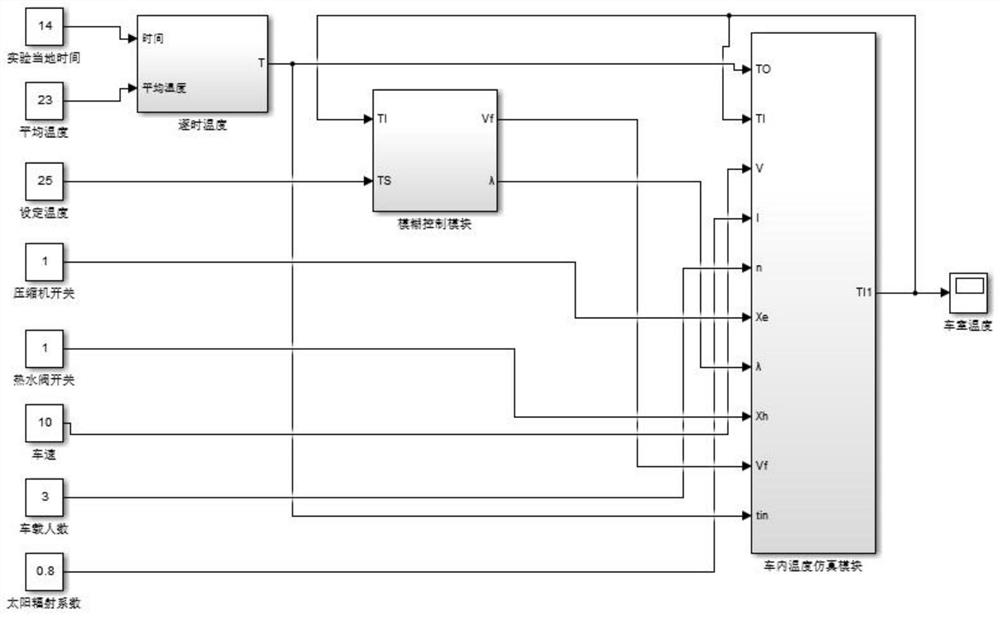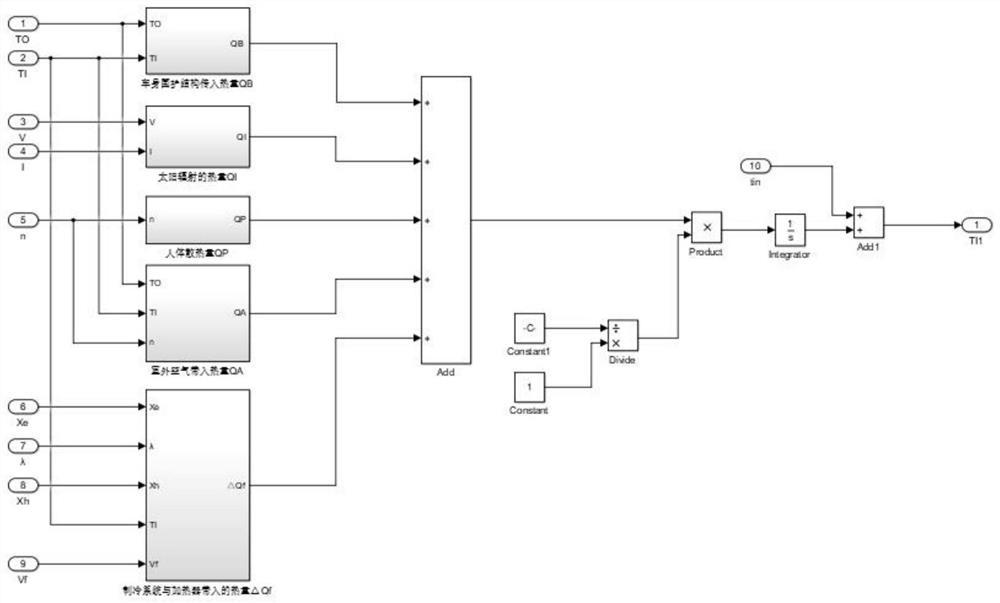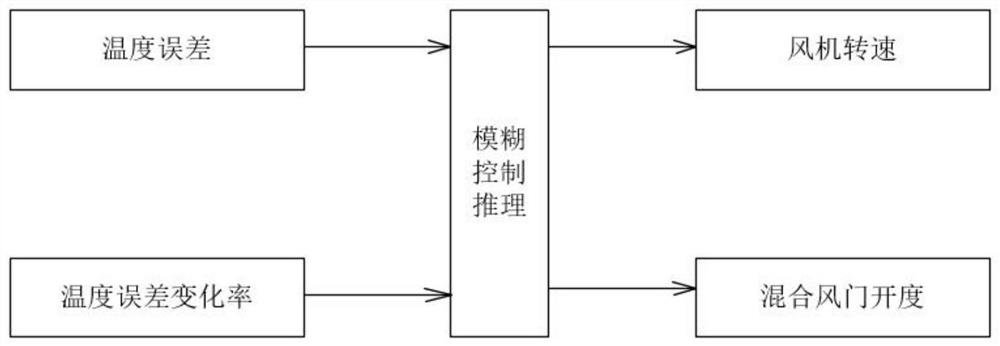In-vehicle temperature control method for electric vehicle
An in-vehicle temperature, electric vehicle technology, applied in vehicle components, heating/cooling equipment, air handling equipment, etc., can solve problems such as affecting the car's endurance and inconvenience for users to travel, improve energy utilization, facilitate detection and processing, Effects of processing work to resolve detections
- Summary
- Abstract
- Description
- Claims
- Application Information
AI Technical Summary
Problems solved by technology
Method used
Image
Examples
Embodiment 1
[0058] This embodiment provides the specific structure of the fuzzy control module, such as image 3 with 4 As shown, the fuzzy control module, which includes a mixing damper unit and an evaporator fan unit, is used to regulate the working state of the mixing damper unit and the evaporator fan unit, and the mixing damper unit is used to control the opening of the damper, and the evaporator fan The unit is used to control the fan speed.
[0059] In the fuzzy control module,
[0060] The input quantity of the fuzzy control module is: temperature error and temperature error change rate in the compartment;
[0061] The output control quantities are: fan speed and damper opening.
[0062] In the fuzzy control module,
[0063] When the temperature fluctuation in the cabin cab is large, the controller in the fuzzy control module starts to work and respond; when the fluctuation is small, the fan speed in the evaporator fan unit is controlled within 30% of the maximum speed.
[0064...
Embodiment 2
[0084] This embodiment provides the specific structure of the fuzzy control module, such as figure 2 As shown, the temperature simulation module inside the car is used to obtain the temperature inside the car compartment, and the model of the temperature simulation module inside the car is established according to the formula:
[0085] Formula 1, ΔQ f =1000ρV f c p (T f -T i )=1000ρV f c p [0.7(1-λ)(0-T i )X e +0.5λ(60-T i )X h ]
[0086] and formula two,
[0087]
[0088] The input parameters of the system and the calculation relationship can be determined, and the subsystems of each part of the heat source can be established separately. According to the formula 2, the temperature change rate in the compartment can be obtained, and finally the temperature information in the compartment can be obtained by integrating and calculating.
[0089] refer to figure 2 As shown, in the vehicle interior temperature simulation module,
[0090] The basis of formula 1 is...
PUM
 Login to View More
Login to View More Abstract
Description
Claims
Application Information
 Login to View More
Login to View More - R&D
- Intellectual Property
- Life Sciences
- Materials
- Tech Scout
- Unparalleled Data Quality
- Higher Quality Content
- 60% Fewer Hallucinations
Browse by: Latest US Patents, China's latest patents, Technical Efficacy Thesaurus, Application Domain, Technology Topic, Popular Technical Reports.
© 2025 PatSnap. All rights reserved.Legal|Privacy policy|Modern Slavery Act Transparency Statement|Sitemap|About US| Contact US: help@patsnap.com



